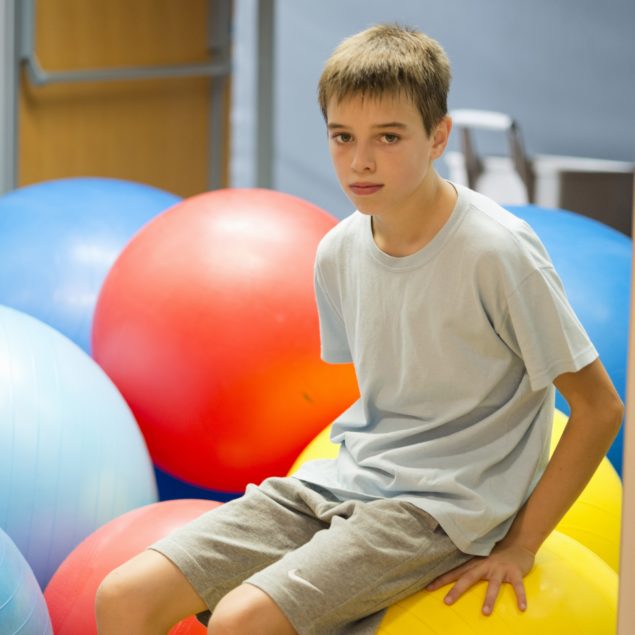 Weighted vests and stability balls do not help elementary schoolers with ADHD focus in class, according to a new study by researchers at FIU’s Center for Children and Families.
Weighted vests and stability balls do not help elementary schoolers with ADHD focus in class, according to a new study by researchers at FIU’s Center for Children and Families.
This is the first study to evaluate the effect of occupational therapy (OT) techniques, specifically weighted vests and stability balls, on classroom behavior and academic productivity in elementary-aged children with Attention Deficit Hyperactivity Disorder (ADHD).
The study also looked at the effect of stimulant medication and its combination with each of the OT interventions. Results revealed that low doses of medication in addition to behavioral classroom management techniques, such as rewards for positive behavior, led to improvements in classroom behavior and academic productivity for children with ADHD while the OT interventions did not.
ADHD is among the most common childhood mental health disorders and affects at least one child in every elementary school classroom in the U.S., but approximately one third of these children do not receive school support.
“Schools should allocate funds toward implementing behavioral approaches rather than giving children devices such as weighted vests or stability balls,” said Fiona Macphee, lead author of the study and a doctoral student in the FIU Department of Psychology.
Researchers assessed 64 children with ADHD ages 5 to 12 in a controlled classroom setting during the Summer Treatment Program. The use of stability balls and weighted vests was randomized daily by classroom for 60 minutes a day over a six-week period. Medication or a placebo was also given to children for three weeks.
Macphee explained the theories guiding the use of both weighted vests and stability balls are scientifically unsupported. Yet, in a survey of general education teachers, 47 percent reported that they were either currently using or had used stability balls in the past.
New York City public schools spent an estimated $58 million in 2014 on occupational therapy interventions — a $20 million increase from just five years prior. Similarly, Chicago experienced a 30 percent increase in OT referrals over five years. For Los Angeles, the increase was 20 percent over three years. Approximately 10.8 percent of children with ADHD in special education settings receive OT interventions in school. Macphee says it is important to systematically evaluate whether those therapies provide the best support for children with ADHD.
“Behavioral therapy is the best first-step treatment for children with ADHD because they learn skills and strategies that will help them succeed at school, at home and in relationships long-term,” said William E. Pelham, Jr., director of the Center for Children and Families and co-author of the study. “School staff and parents should be working together to set goals for the child to target areas of need and set up a home reward system to provide and/or restrict privileges at home based on school behavior.”
The findings were published in the School Psychology Review.





